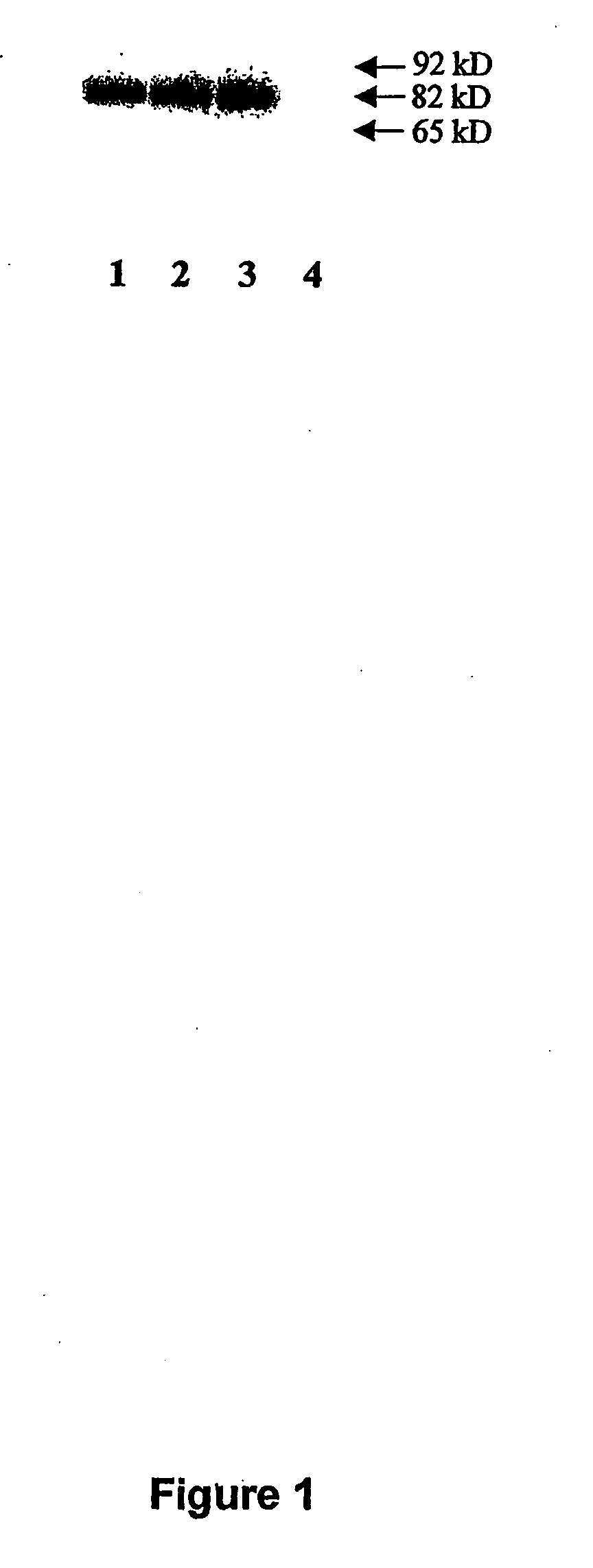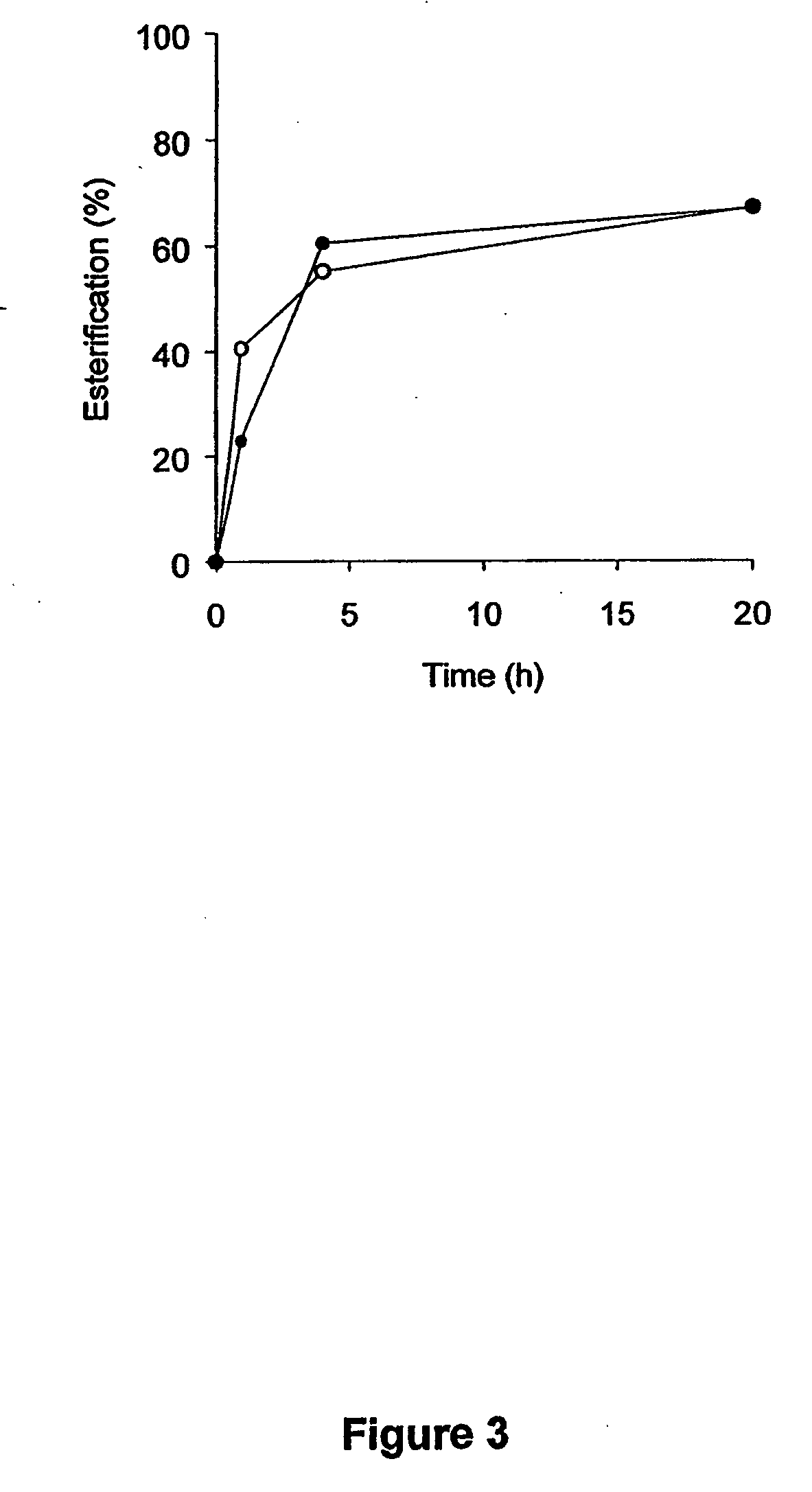Acyltransferase
- Summary
- Abstract
- Description
- Claims
- Application Information
AI Technical Summary
Benefits of technology
Problems solved by technology
Method used
Image
Examples
example 1
Amplification of Nucleotide Sequences, Homologues to the Saccharomvees cerevisiae Gene LRO1, for Expression in Pichia pastoris.
[0088] Nucleotide sequences were amplified from a plasmid template (pBluescript, Stratagene Inc.) containing the intact yeast gene LRO1, encoding a phospholipid: diacylglycerol acyltransferase (PDAT) with one membrane-spanning region, (described in Dahlqvist et al., 2000, PNAS 97:6487-6492) by thermo stable Pfu Turbo Polymerase (Stratagene Inc.). A set of primers were designed for the amplification of three different nucleotide sequences A, B, and C, identical in nucleotide sequence to the part of the LRO1 gene encoding the amino acid residues 98 to 661, 170 to 661 and 190 to 661 respectively. The forward (5′ end) primers used for this PCR reaction were for the sequence A, B, and C; 5′CCATGGGAATGAATTCATGGCTTATCATGTTCATAATAGCGATAGC3′, 5′CCATGGGAATGAATTCCGAGGCCAAACATCCTGTTGTAATG3′, and 5′CCATGGGAATGAATTCGGAGTTATTGGAGACGATGAGTGCGATAGT3′, respectively.
[0089] ...
example 2
Transformation in Pichia and Growth for Expression.
[0093] Competent Pichia pastoris cells were prepared according to the procedure mentioned in the EasySelect Manual supplied by Invitrogen Inc. Electroporation, as described in the EasySelect Manual, was used to transform the linearized expression vector, pATWAX, p72ATWAX, p92ATWAX or pHISATWAX described in EXAMPLE 1 above, into the Pichiapastoris host strain X-33 or KM71H. The procedure of Zeocin selection was used to select transformants, which were plated on YPD medium containing Zeocin. For the expression of the transformed genes, cells were initially cultured to a final O.D. of 3-5 in BMGY medium supplemented with 1% (v / v) glycerol, after which cells were subsequently washed with either sterile water or YPD medium. The washed cells were then suspended in BMMY medium supplemented with 0.5% (v / v) methanol for induction of the transgene and further cultured for 3-4 days in a volume corresponding to 0.5-0.2 of the original volume....
example 3
Western Blot Analysis of Cell Free Medium of Pichia pastoris KM71H Transformed with pATWAX.
[0094] In order to determine the presence of ATWAX in the cell free culture medium, P. pastoris KM71H transformed with pATWAX were cultured as described in EXAMPLE 2. Aliquots of cell free culture medium were withdrawn at different time points following induction and subjected to Western blot analysis using anti yeast-PDAT polyclonal antibody. The antibody was raised in a rabbit by the injection of partially purified ATWAX. The ATWAX used for this purpose was produced in Echerichia coli.
[0095] The western blot based on immunodetection system as presented in FIG. 1 clearly show the presence of a polypeptide, present in the cell free medium with a molecular weight of approximately 82 kDa, that cross-reacts with the anti-yeast PDAT. By comparing the results obtained on the western blot analyses obtained with the cell free medium from 58, 82 and 112 hours of induction (i.e. FIG. 1 lane 1, 2, an...
PUM
| Property | Measurement | Unit |
|---|---|---|
| Temperature | aaaaa | aaaaa |
| Temperature | aaaaa | aaaaa |
| Fraction | aaaaa | aaaaa |
Abstract
Description
Claims
Application Information
 Login to View More
Login to View More - R&D
- Intellectual Property
- Life Sciences
- Materials
- Tech Scout
- Unparalleled Data Quality
- Higher Quality Content
- 60% Fewer Hallucinations
Browse by: Latest US Patents, China's latest patents, Technical Efficacy Thesaurus, Application Domain, Technology Topic, Popular Technical Reports.
© 2025 PatSnap. All rights reserved.Legal|Privacy policy|Modern Slavery Act Transparency Statement|Sitemap|About US| Contact US: help@patsnap.com



